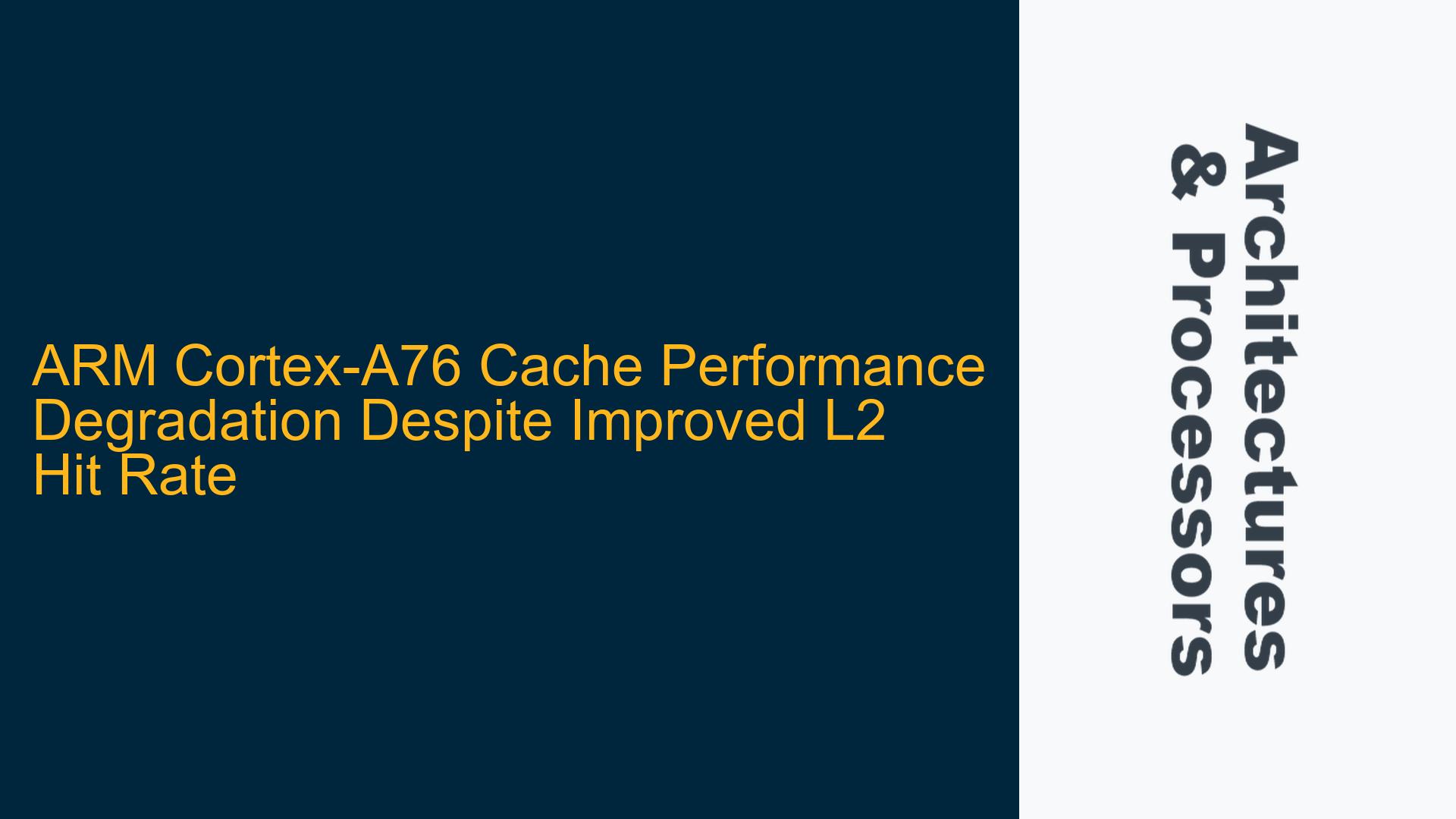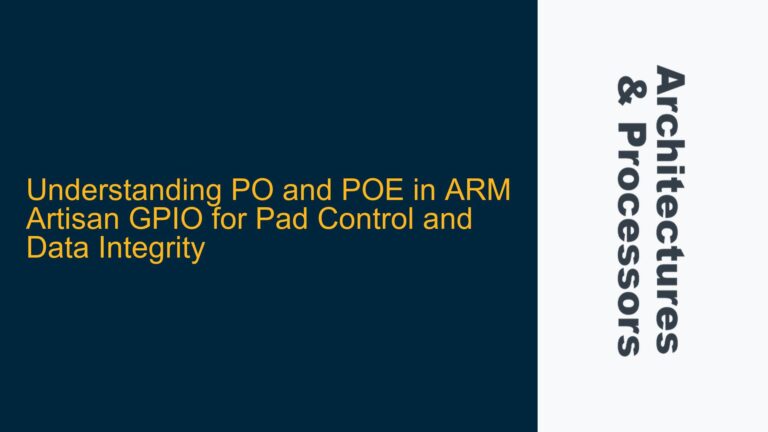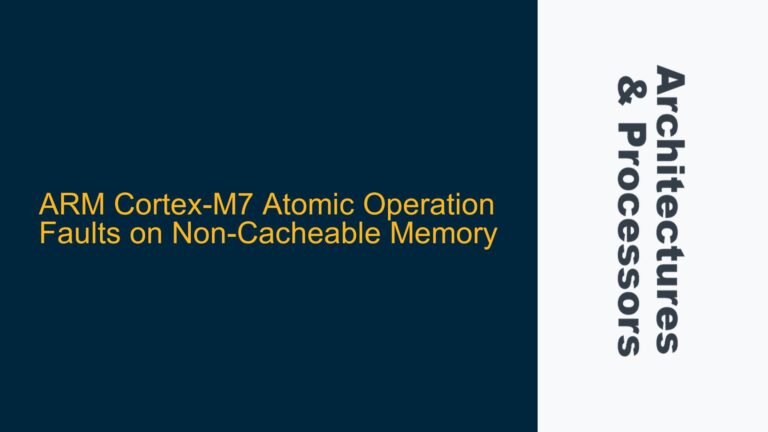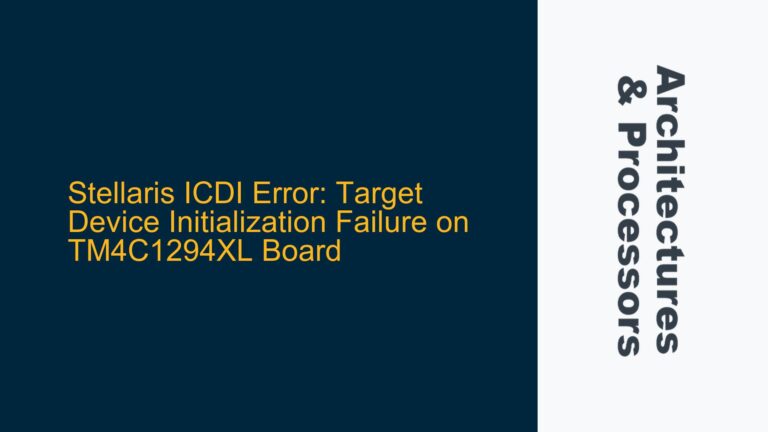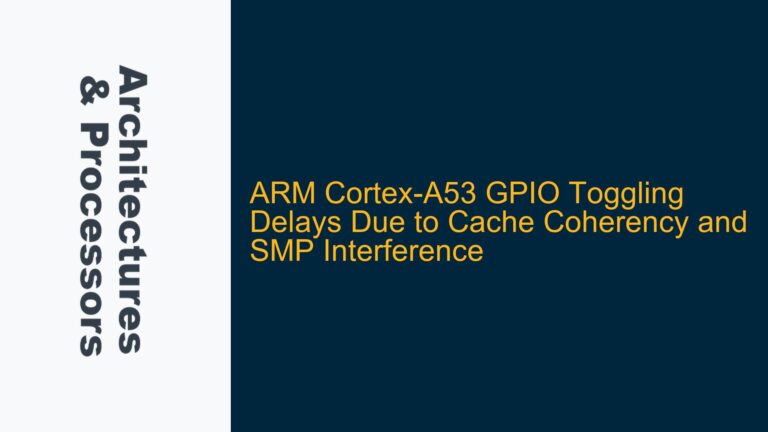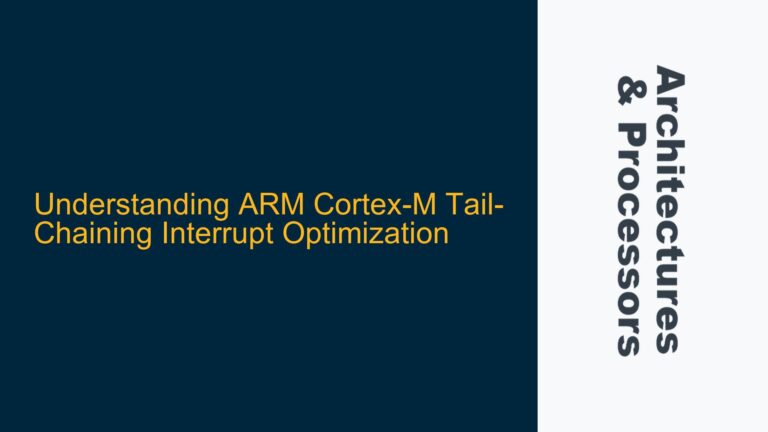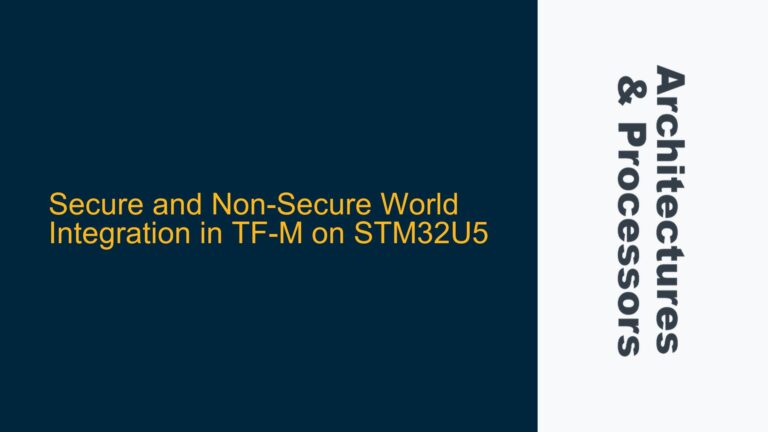ARM Cortex-A76 Cache Behavior During Matrix Column Reads with Prefetching
The observed performance degradation despite an improved L2 cache hit rate on the ARM Cortex-A76 processor, as seen in the matrix column read program, is a complex issue that involves multiple layers of cache hierarchy and prefetching mechanisms. The Cortex-A76, used in the Raspberry Pi 5, features a multi-level cache architecture with 64KB L1 and 512KB L2 caches per core, and a shared 2MB L3 cache. The program in question uses the ARMv8 PRFM instruction to prefetch data into the L2 cache, aiming to reduce cache misses and improve performance. However, the data collected using perf stat reveals that while L2 cache misses decrease, L3 cache accesses increase, and overall program performance degrades.
The matrix column read program accesses a large 2D array in a column-wise manner, which is inherently cache-unfriendly due to the non-sequential memory access pattern. Prefetching is employed to mitigate this by bringing data into the cache before it is needed. The program uses a loop structure where each iteration processes 16 columns at a time, with prefetching applied at a specified distance ahead of the current access point. The prefetch distance is varied to observe its impact on cache behavior and performance.
The key metrics collected include L1 and L2 cache read/write counts, L3 cache read counts, and the number of cycles and instructions executed. The data shows that while the L2 cache miss rate decreases with certain prefetch distances, the L3 cache access rate increases, and the overall execution time worsens. This counterintuitive result suggests that the prefetching strategy, while effective at reducing L2 misses, may be causing unintended side effects in the cache hierarchy.
Prefetch Distance Impact on Cache Coherency and Bandwidth Saturation
One possible cause of the observed performance degradation is the impact of prefetch distance on cache coherency and bandwidth saturation. The ARM Cortex-A76 employs a sophisticated cache coherency protocol to maintain consistency across its L1, L2, and L3 caches. When data is prefetched into the L2 cache, it must be coherent with the L3 cache, which may involve additional coherence transactions. If the prefetch distance is too large, the prefetched data may not be used before it is evicted from the L2 cache, leading to unnecessary L3 cache accesses and increased coherence overhead.
Another factor to consider is the bandwidth saturation of the memory subsystem. The Cortex-A76’s memory subsystem is designed to handle a certain amount of data traffic between the caches and main memory. When prefetching is aggressively applied, it can saturate the available bandwidth, causing contention and delays in data transfer. This is particularly relevant in the context of the matrix column read program, where the non-sequential access pattern already places a high demand on the memory subsystem. The increased L3 cache access rate observed with certain prefetch distances may be a symptom of this bandwidth saturation, as the L3 cache becomes a bottleneck for data transfer.
Additionally, the Cortex-A76’s cache replacement policy may play a role in the observed behavior. The L2 cache uses a pseudo-LRU (Least Recently Used) replacement policy, which may not always evict the least useful data when new data is prefetched. If the prefetched data is not used in a timely manner, it may displace more useful data from the cache, leading to increased L3 cache accesses and degraded performance. This is especially problematic in the matrix column read program, where the access pattern is irregular and the usefulness of prefetched data is highly dependent on the prefetch distance.
Optimizing Prefetch Distance and Cache Management for Matrix Column Reads
To address the performance degradation observed in the matrix column read program, several steps can be taken to optimize the prefetch distance and cache management. First, it is essential to carefully tune the prefetch distance to balance the benefits of reduced L2 cache misses against the costs of increased L3 cache accesses and potential bandwidth saturation. This can be achieved through empirical testing, where the prefetch distance is varied and the impact on cache metrics and performance is measured.
One approach is to use a smaller prefetch distance that aligns more closely with the program’s access pattern. In the case of the matrix column read program, a smaller prefetch distance may reduce the likelihood of prefetched data being evicted before it is used, thereby minimizing unnecessary L3 cache accesses. Additionally, the use of a smaller prefetch distance may reduce the overall bandwidth demand on the memory subsystem, alleviating contention and improving performance.
Another optimization strategy is to implement cache management techniques that ensure the most useful data remains in the L2 cache. This can be achieved through the use of cache partitioning or prioritization, where certain data is given higher priority for retention in the cache. In the context of the matrix column read program, this could involve prioritizing the retention of data that is accessed more frequently or is more likely to be reused in subsequent iterations.
Furthermore, it is important to consider the impact of the Cortex-A76’s cache replacement policy on the effectiveness of prefetching. If the pseudo-LRU replacement policy is causing useful data to be evicted prematurely, it may be necessary to adjust the replacement policy or implement additional cache management techniques to mitigate this effect. This could involve using a more sophisticated replacement policy that takes into account the access pattern of the program and the usefulness of prefetched data.
Finally, it is crucial to monitor the overall bandwidth usage of the memory subsystem and ensure that it is not being saturated by the prefetching strategy. This can be achieved through the use of performance monitoring tools that provide detailed insights into the data traffic between the caches and main memory. If bandwidth saturation is detected, it may be necessary to reduce the prefetch distance or implement additional optimizations to reduce the overall bandwidth demand.
In conclusion, the performance degradation observed in the matrix column read program on the ARM Cortex-A76 processor is a complex issue that involves multiple factors, including cache coherency, bandwidth saturation, and cache replacement policy. By carefully tuning the prefetch distance, implementing cache management techniques, and monitoring bandwidth usage, it is possible to optimize the performance of the program and achieve the desired improvements in cache hit rate and overall execution time.
